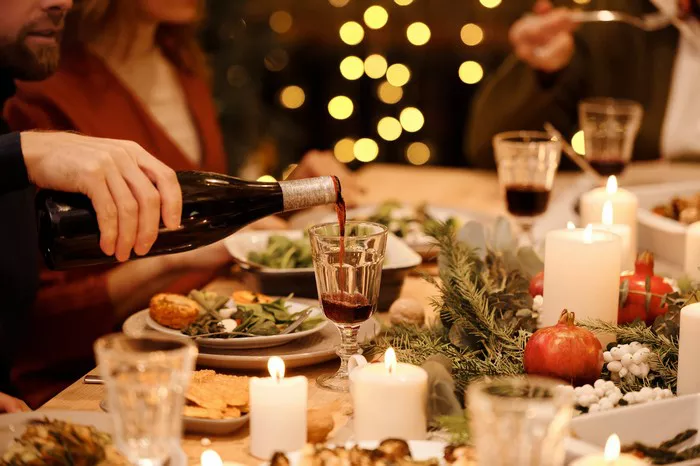Elderflower sparkling wine is a delightful and effervescent beverage that captures the delicate floral essence of elderflowers. With its enchanting aroma and refreshing taste, it’s a perfect choice for special occasions or simply for savoring a taste of summer. In this comprehensive guide, we will walk you through the process of making elderflower sparkling wine at home, from gathering elderflowers to bottling your own bubbly creation.
Gathering Elderflowers
The first step in making elderflower sparkling wine is gathering fresh elderflowers. Elderflowers are typically in season from late spring to early summer, and they can be found in various regions around the world. When foraging for elderflowers, keep the following tips in mind:
Identify the Elderberry Bush: Elderflowers grow on elderberry bushes, which are often found in hedgerows, woodlands, and along riverbanks. They are characterized by clusters of small, white flowers.
Choose Fresh Flowers: Select elderflower clusters with fresh, fully open flowers. The flowers should have a fragrant, sweet aroma.
Avoid Fading Flowers: Avoid elderflowers that have started to turn brown or wilt. The fresher the flowers, the better the flavor of your elderflower sparkling wine.
Check for Insects: Examine the elderflowers for insects or debris and gently shake or tap them to remove any unwanted visitors.
Use Caution: When foraging, make sure you have permission to gather flowers from the area, and be aware of any local regulations or guidelines regarding plant collection.
Preparing Elderflower Infusion
Once you have gathered your elderflowers, it’s time to create an elderflower infusion, which will serve as the base for your sparkling wine. Here’s how to do it:
Ingredients:
20-30 fresh elderflower clusters
1.5 kg (3.3 lbs) sugar
1 lemon, thinly sliced
1 orange, thinly sliced
4.5 liters (1.2 gallons) water
1 package of wine yeast
Prepare the Flowers: Carefully remove the elderflowers from their stems, discarding any green parts. Place the flowers in a large, clean container.
Add Sugar: Dissolve the sugar in a portion of the water, creating a sugar syrup. Pour the sugar syrup over the elderflowers in the container.
Add Citrus: Add the thinly sliced lemon and orange to the container with the elderflowers.
Boil Water: In a separate pot, bring the remaining water to a boil. Allow it to cool slightly before pouring it over the elderflowers, sugar, and citrus.
Stir and Cover: Gently stir the mixture to ensure all ingredients are well combined. Cover the container with a clean cloth or plastic wrap.
Add Yeast: Once the mixture has cooled to around 21°C (70°F), sprinkle the wine yeast over the surface. Stir it in gently.
Fermentation: Cover the container with a lid or airlock to allow carbon dioxide to escape during fermentation. Place the container in a cool, dark place for about 24 hours.
Fermentation and Bottling
The fermentation process is a critical step in making elderflower sparkling wine. During this stage, the yeast consumes the sugars, converting them into alcohol and carbon dioxide. Here’s what to do:
Monitor Fermentation: Check on the fermentation progress daily. You should notice bubbles forming and the mixture becoming slightly effervescent.
Strain and Bottle: After 4-7 days of fermentation, strain the elderflower infusion through a fine mesh strainer or cheesecloth to remove the solids. Transfer the liquid to sterilized wine bottles with screw caps or cork stoppers, leaving some headspace at the top.
Seal the Bottles: If using screw caps, ensure they are tightly sealed. If using cork stoppers, secure them in place with a corking tool.
Second Fermentation: Elderflower sparkling wine undergoes a second fermentation in the bottle, which creates the carbonation. Store the bottles in a cool, dark place, preferably at a temperature around 15-18°C (59-64°F), for at least two weeks. During this time, the wine will carbonate naturally.
Chill and Serve: Once the second fermentation is complete, refrigerate the bottles to halt the fermentation process. Elderflower sparkling wine is best served chilled.
Tasting and Enjoyment
Now that you’ve successfully made your own elderflower sparkling wine, it’s time to savor the fruits of your labor. Here are some tips for tasting and enjoying your homemade creation:
Chilling: Ensure your elderflower sparkling wine is well-chilled before serving. This enhances its refreshing qualities.
Glassware: Use tall, narrow wine glasses or flutes to serve your elderflower sparkling wine. These glasses help retain the bubbles and showcase the wine’s effervescence.
Aroma: Take a moment to inhale the delightful floral aroma of the elderflowers. This sensory experience is an essential part of enjoying elderflower sparkling wine.
Conclusion:
Making elderflower sparkling wine at home is a rewarding and enjoyable endeavor that allows you to capture the essence of this delightful floral beverage. From foraging for elderflowers to fermenting and bottling your creation, each step is an opportunity to connect with the craft of winemaking and celebrate the beauty of nature.


